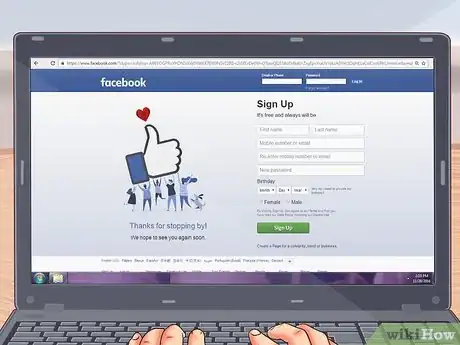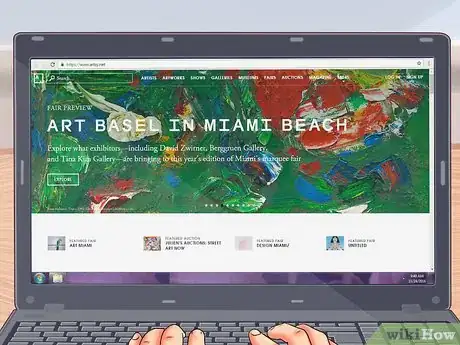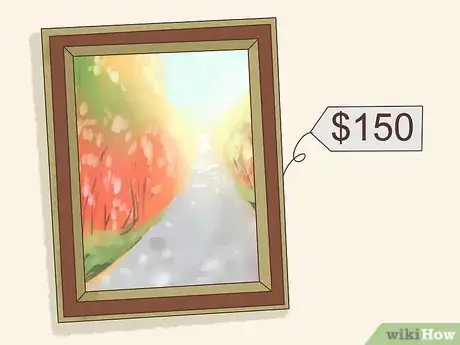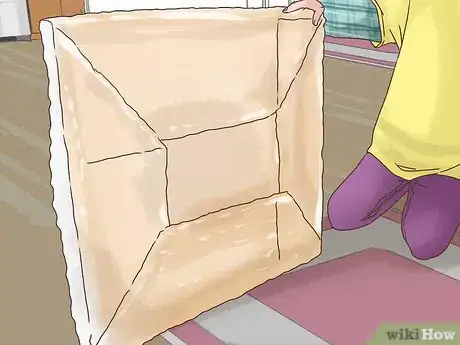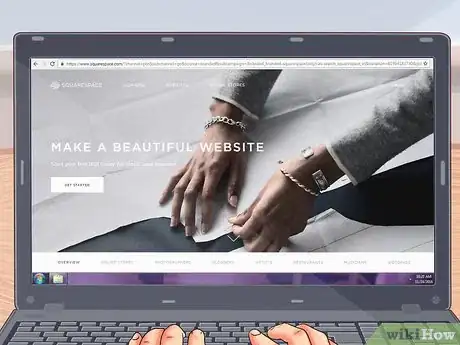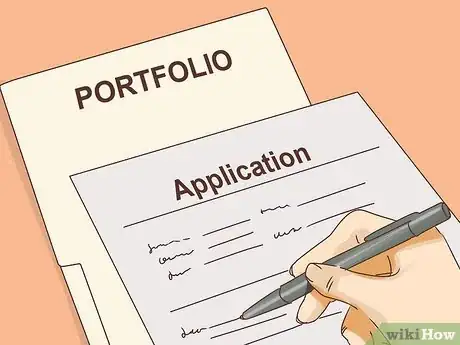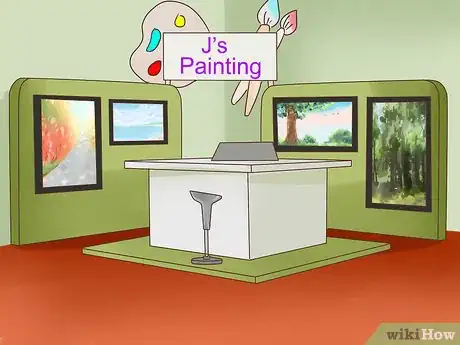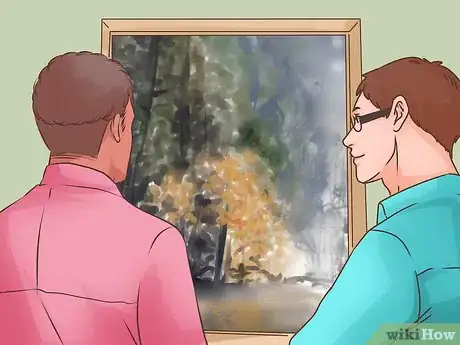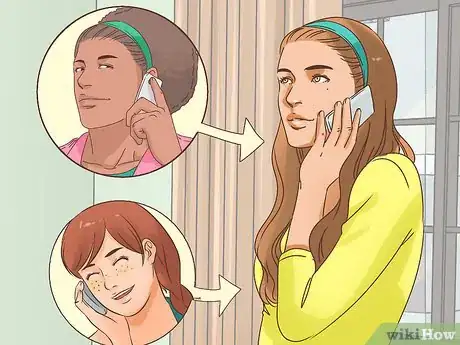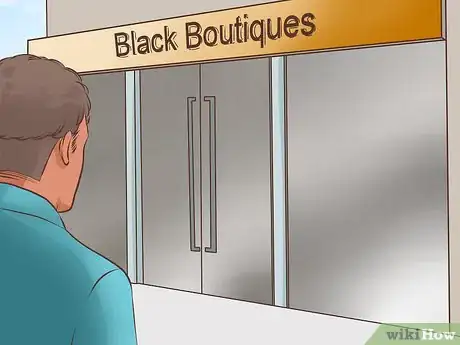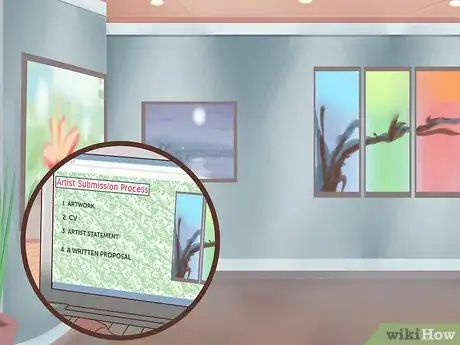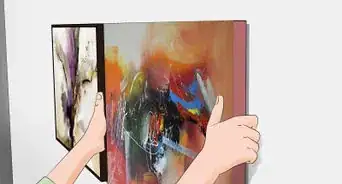This article was co-authored by Natasha Dikareva, MFA. Natasha Dikareva is a San Francisco, California based sculptor, and installation artist. With over 25 years of ceramics, sculpting, and installation experience, Natasha also teaches a ceramic sculpture workshop titled "Adventures in Clay" covering concept development, hand-building techniques, texture, and glazing techniques. Her work has been featured in solo and group exhibitions at the Beatrice Wood Center for the Arts, Abrams Claghorn Gallery, Bloomington Center for the Arts, Maria Kravetz Gallery, and the American Museum of Ceramic Art. She has taught at the University of Minnesota and the American Indian OIC School. She has been awarded the Excellence Award at the 1st World Teapot Competition, Best in Show at the 4th Clay & Glass Biennial Competition, and a Grand Prize at the American Museum of Ceramic Art. Natasha holds an MFA from the University of Minnesota and a BFA from Kiev Fine Arts College.
There are 17 references cited in this article, which can be found at the bottom of the page.
wikiHow marks an article as reader-approved once it receives enough positive feedback. In this case, 87% of readers who voted found the article helpful, earning it our reader-approved status.
This article has been viewed 287,845 times.
Millions of people have paintings decorating the walls of their homes. If you're a painter, you're probably eager to share your artwork with the world. One of the best ways to do this is to sell it yourself! Marketing your own work takes a lot of effort, but it's very rewarding. Finishing your paintings and creating a consistent body of work is a good start, but you have to be willing to follow up by creating a personal brand and approaching buyers as much as they approach you. By staying professional and cultivating a presence, you can sell your paintings online, at conventions, and even in galleries.
Steps
Creating a Brand Online
-
1Build a social media presence. You’re probably already on at least one social media website. Furthermore, you have a basic idea about how they work. Social media can be used to make connections with others and display things you find beautiful.[1] These qualities also make social media an excellent way to launch your career. Here are a few different websites you should consider using--they all work a little differently, so try more than one.
- Facebook is a good way to stay connected to a wide demographic of fans. Make a fan page (separate from your personal account) and use it to talk about upcoming events and new pieces.[2]
- Instagram is populated by a younger demographic. Because it’s so image-driven, it’s great to show off sketches, works-in-progress, and finished commissions. You can also use an Instagram page to show off your inspirations, like other art you like or museums you've visited.[3]
- Twitter requires pithiness, but it’s surprisingly useful. Leverage your 140-character tweets to promote shows and connect with other artists.[4]
- Tumblr allows you to post complete works, and is also a great way to build relationships with other artists (since a good Tumblr is comprised of a mix of original content and artwork you find beautiful).[5]
-
2Start by selling through a third-party website. Many artists start out their online sales not through a private page, but through an established website that features lots of up-and-coming artists. There are a few advantages to this: you don’t have to know how to code to get started, and many new buyers feel more comfortable shopping through a website with buyer protections in place. Here are a few well-known art vendors online.[6]Advertisement
-
3Price your work fairly. It can be really hard to figure out how to price your work: many new artists end up undercharging, which is simply not sustainable. Don’t sell yourself short—pick a pricing scheme for your pieces, and stick to it. Consistency is key! (And if you’re worried that you’re overcharging a tiny bit for the pieces that you sell, that’s often a sign that you’re charging about the right amount.)[7]
- Look around in galleries or on other artist's websites to find how much they are charging for similar works. You can use this as a baseline and then tailor the price to match your needs and experience level.[8]
- You can start by charging by the hour--for instance, if a painting took you ten hours to complete, you can value your time at $15/hour and charge $150 for it.
- You can also charge by the linear inch; for instance, if a painting is 20 by 30 inches, and you charge $0.50 per linear inch, the total cost would be $300.
- Don’t forget to factor in the cost of materials! Include finishing touches like frames in this calculation.
-
4Take commissions. If you’ve been building up an online presence and presenting a consistent artistic vision to your fans, someone will probably ask you for a custom work sooner or later. This is really exciting! Don’t get overwhelmed by the process of working with another person’s vision, but ask plenty of questions and offer frequent updates.
- Make sure to send your portfolio to someone who inquires about a comission--they should feel like your style is a good match if you’re going to work together.[9]
- For consistency’s sake, price commissions similarly to other paintings of the same size, materials, and time commitment.
- Ask for a deposit of 25% or so before you begin the piece. This will protect you in case the buyer doesn’t like the finished product. In the unlikely event that the buyer refuses the painting, you can keep it and sell it to someone else later.[10]
-
5Pack carefully. Once you’ve made a sale online, you’ll have to ship out your work. Wrapping the painting in multiple layers of both hard and soft materials should keep it safe in transit, so that it gets to your customer as pristine as it left you.[11]
- Start by wrapping the painting in palette wrap (an art supply that looks like plastic wrap). Start by holding the wrap in the back, then pull it around to the front, and then to the back again.
- Align the long edge of the painting with a large piece of cardboard, and mark where the short sides rest. Now, flip over the painting along the long edge, so that it’s in the middle of the cardboard. Cut along the long edge so that you have a big cardboard rectangle. Wrap this around the painting, and secure it with packing tape.
- Cover the cardboard-wrapped painting in one or two layers of bubble wrap. Secure the bubble wrap with packing tape.
- Place the bubble-wrapped painting in a nice big box, then fill in gaps in the box with bubble wrap or packing peanuts.
- Finish off by neatly addressing the box and decorating it with a few Fragile stickers.
-
6Consider creating your own website. If you’ve been in the online game for a while, it may be time to take your sales to your own private webpage. This is a big step, and one perhaps best taken if you already have a solid customer base, but having your sales and portfolio all bound up under one domain name is professional and elegant.[12]
- You can use basic coding knowledge to make your website.
- Using a template service, like Squarespace or Weebly, also works if you don’t code.
- Consider adding a blog to your website. This allows for longer-form thought than social media does, and can also be used to draw attention to upcoming events.[13]
- Don’t forget to link to your social media and vendors.
Selling at Fairs and Conventions
-
1Start local. Fairs and conventions can be a great way to connect with new people and sell your artwork, but they can also be expensive. There’s the cost of your booth itself, along with travel expenses and time off of your day job (if you have one). Try to sell first at events close to your home, until you have a good grasp on what you need to do to succeed at a convention.
-
2Apply early and with care. Many conventions start booking their booths nearly a year in advance; you’ll want to stay on top of deadlines for your chosen events, and apply as early as possible. Most conventions have a set application, including a portfolio and an artist’s statement--this will help the organizers determine if you’re a good fit in genre and style.[14] However, it’s just as important to know if the convention is a good fit for you. Before you apply, find out the answers to some of these important questions.
- How much space is each booth allowed?
- Is a chair included?
- Will there be an outlet nearby?
- Is the space accessible (especially if you have any mobility considerations)?
-
3Be professional. When you go to a fair or convention, you’re not just there to hang out: you’re there to promote your artwork and your brand. Be kind to everyone, from guests to fellow artists to staff, don’t let your art spill over onto other people’s tables, and clean up after yourself.
- Pack the artwork you bring carefully, and make sure to have extra packing supplies.
- Bring business cards, too--this way, even if someone isn’t able to buy a painting today, they can refer back to you later..[15]
- Pay for your booth or table at the convention on time; otherwise, your spot may go to someone else.[16]
-
4Bring decorations to go with your paintings. Your paintings are what will hold most people’s attention, but you’ll need to catch their interest first. Decorate your booth in a way that matches your aesthetic and corresponds to your paintings to draw the eyes of potential customers.
- Consider setting out small objects that correspond to your subjects (for instance, shells, if you like painting seascapes.)
- Bring a nice solid-colored tablecloth to make an even, professional-looking workspace.[17]
- A standing banner with your name, an art sample, and contact information on it can go almost anywhere, and commands attention without being too obnoxious.[18]
-
5Be engaging. Now that you’re all set up, be friendly with the people who come by your table. Smile and say hi to browsers, and try to master the art of engaging in conversation without being too pushy. You can even consider doing quick commissions, like sketches or watercolors, for interested buyers.[19]
- If you don't know what to say when someone is looking at your work, a smile and a simple "Hi there!" or "Hello!" works wonders.
- It's easy to engage with buyers with sincere compliments ("I love your shoes!"), as well.
Exhibiting in Stores and Galleries
-
1Use your network. Your professional network is probably bigger than you think it is, and many of the most fruitful business relationships have sprung from personal friendships and connections. If you’re looking to sell art in a brick-and-mortar shop or gallery, reach out to people you know who might be able to help. Introduce yourself, provide samples of your recent work, and ask for what you need.[20]
- You can network in person, over the phone, or over email. Just be polite![21] If you're reaching out to your mother's old classmate, say "Hi Judy, my mother told me a lot about your time together in college. I'm reaching out because she's mentioned your gallery before, and I think it might be a good fit with my work. Here's a link to my portfolio and website. Thank you so much for your time."
- Check in with old teachers and professors, too--they often have resources that could help you. Say "I'm looking into pushing my career into a more professional stage, and I think exhibiting in a gallery could be the next step. Do you know of any places close by that specialize in young or emerging artists?"
-
2Do a portfolio review. If you can afford it, a portfolio review can help you both focus your art, and sell it better. Generally, this involves paying a fee to a jury, all the members of whom will sit down with you and talk to you abut the coherence of your work and its marketability. This is a step to consider if you really want to take your painting business to the next level.[22]
- Be polite to the folks giving you feedback! The art world is small, and you never know when you’re going to run into them again.
- Don’t get too bogged down by criticism. No artist meets with universal acclaim, so just concentrate on improving by applying constructive criticism to your work.
-
3Consider consignment. Look for stores or boutiques in your area who you think would want to carry your items, and reach out to ask if they might carry on consignment: this way, you pay them a portion of the profits if the item is sold. Consignment is excellent for three main reasons: you get publicity, you don't pay anything up front, and you don't pay rent on the building where they are selling your items.[23]
-
4Submit to galleries. The last way to sell your paintings is arguably the one with the most professional appeal: through a gallery. A gallery is almost like a museum, in that it’s carefully curated and professionally staffed by art experts, except that the art on its walls is for sale. Apply widely--just like if you were applying for a job, you probably won’t hear back from every one, but each contact is valuable.
- When submitting to a gallery, stick to the submission process it follows. You can find this information on the gallery’s website, but you’ll often be asked for samples and a statement (especially if the gallery has a theme).[24]
- Submit groups of artwork with coherent ties to one another. For instance, you could submit a series, or several paintings you did at different times that all allude to Aztec mythology.[25]
Expert Q&A
Did you know you can get expert answers for this article?
Unlock expert answers by supporting wikiHow
-
QuestionHow much should I charge for a painting?
 Natasha Dikareva, MFANatasha Dikareva is a San Francisco, California based sculptor, and installation artist. With over 25 years of ceramics, sculpting, and installation experience, Natasha also teaches a ceramic sculpture workshop titled "Adventures in Clay" covering concept development, hand-building techniques, texture, and glazing techniques. Her work has been featured in solo and group exhibitions at the Beatrice Wood Center for the Arts, Abrams Claghorn Gallery, Bloomington Center for the Arts, Maria Kravetz Gallery, and the American Museum of Ceramic Art. She has taught at the University of Minnesota and the American Indian OIC School. She has been awarded the Excellence Award at the 1st World Teapot Competition, Best in Show at the 4th Clay & Glass Biennial Competition, and a Grand Prize at the American Museum of Ceramic Art. Natasha holds an MFA from the University of Minnesota and a BFA from Kiev Fine Arts College.
Natasha Dikareva, MFANatasha Dikareva is a San Francisco, California based sculptor, and installation artist. With over 25 years of ceramics, sculpting, and installation experience, Natasha also teaches a ceramic sculpture workshop titled "Adventures in Clay" covering concept development, hand-building techniques, texture, and glazing techniques. Her work has been featured in solo and group exhibitions at the Beatrice Wood Center for the Arts, Abrams Claghorn Gallery, Bloomington Center for the Arts, Maria Kravetz Gallery, and the American Museum of Ceramic Art. She has taught at the University of Minnesota and the American Indian OIC School. She has been awarded the Excellence Award at the 1st World Teapot Competition, Best in Show at the 4th Clay & Glass Biennial Competition, and a Grand Prize at the American Museum of Ceramic Art. Natasha holds an MFA from the University of Minnesota and a BFA from Kiev Fine Arts College.
Ceramics & Sculpting Instructor
-
QuestionAre landscape paintings still as popular as they ever were despite landscape photography and landscape computer art
 Community AnswerPhotography and computer art are both amazing art forms, but they cannot replace painting to many people.
Community AnswerPhotography and computer art are both amazing art forms, but they cannot replace painting to many people. -
QuestionI have a thangka paintings and how can I sell them
 Community AnswerYou can consider selling on Ebay or Etsy, or checking if there's a store near you that sells art by consignment.
Community AnswerYou can consider selling on Ebay or Etsy, or checking if there's a store near you that sells art by consignment.
Warnings
- Don't meet at customers' homes, unless you personally know them. That is risky to do.⧼thumbs_response⧽
- For your sake, don't sell to anyone until you have the cash in your hand. If you don't, you're risking losing a piece of your artwork at no cost, not knowing for sure if they will ever pay you.⧼thumbs_response⧽
- Don’t neglect your social media! Even if you’re exhibiting in galleries, you can keep building a customer base with your online presence.⧼thumbs_response⧽
References
- ↑ Natasha Dikareva, MFA. Ceramics & Sculpting Instructor. Expert Interview. 5 May 2020.
- ↑ http://www.huffingtonpost.com/carlota-zimmerman/how-artists-can-use-socia_b_4756824.html
- ↑ Natasha Dikareva, MFA. Ceramics & Sculpting Instructor. Expert Interview. 5 May 2020.
- ↑ http://www.finearttips.com/2011/06/12-compelling-reasons-why-artists-should-use-twitter/
- ↑ http://www.complex.com/style/2013/06/artists-on-tumblr/
- ↑ http://theabundantartist.com/15-ways-to-sell-your-art-online/
- ↑ http://theabundantartist.com/pricing/
- ↑ Natasha Dikareva, MFA. Ceramics & Sculpting Instructor. Expert Interview. 5 May 2020.
- ↑ http://www.artbusiness.com/privcom.html
- ↑ http://theabundantartist.com/pricing/
- ↑ http://reddotblog.com/how-to-ship-paintings-a-step-by-step-guide-for-artists-and-galleries/
- ↑ http://lifehacker.com/5958893/why-its-worth-it-to-purchase-your-own-domain-name
- ↑ http://www.huffingtonpost.com/jennifer-armstrong/how-not-to-start-your-own_b_1588563.html
- ↑ https://design.tutsplus.com/articles/so-you-want-to-be-a-convention-artist--cms-24924
- ↑ http://manga-apps.deviantart.com/journal/Artist-Alley-First-Timer-What-You-Need-to-Know-218747910
- ↑ http://io9.gizmodo.com/want-to-sell-your-stuff-at-a-convention-read-this-comi-1583262061
- ↑ http://io9.gizmodo.com/want-to-sell-your-stuff-at-a-convention-read-this-comi-1583262061
- ↑ http://io9.gizmodo.com/want-to-sell-your-stuff-at-a-convention-read-this-comi-1583262061
- ↑ http://manga-apps.deviantart.com/journal/Artist-Alley-First-Timer-What-You-Need-to-Know-218747910
- ↑ http://www.artbusiness.com/consultpurp.html
- ↑ http://www.artbusiness.com/consultpurp.html
- ↑ http://petapixel.com/2014/11/14/selling-art-galleries-everything-need-know/
- ↑ http://www.chicagogallerynews.com/news/2015/10/art-consignment-what-is-it-and-what-to-look-out-for
- ↑ http://www.artbusiness.com/artists-how-to-get-your-art-into-galleries.html
- ↑ http://www.artbusiness.com/artists-how-to-get-your-art-into-galleries.html
About This Article
To sell paintings, build up your social media presence on sites like Facebook or Tumblr, where you can post examples of your work. Additionally, set up an account with a vendor like Artsy or Etsy, which are sites where customers can buy your art. You could also try applying for a booth at a local event or convention to sell your art work and engage with other artists. You should price your items fairly and consistently, such as by adding up the number of hours it took to make your painting and charging your time at $15 an hour. For tips on how to sell your work at fairs or in galleries, keep reading!
